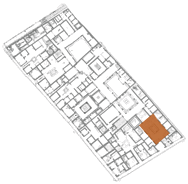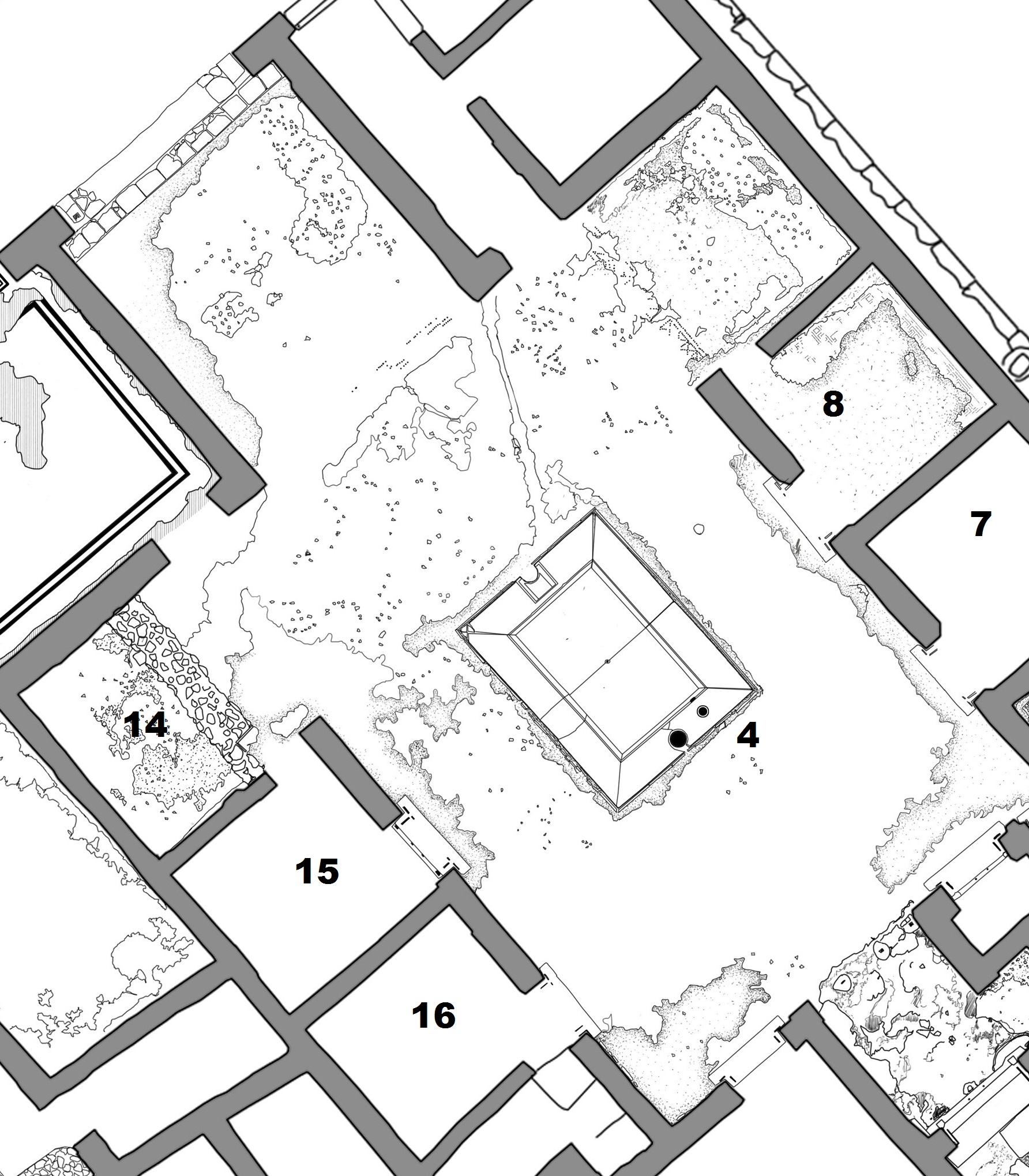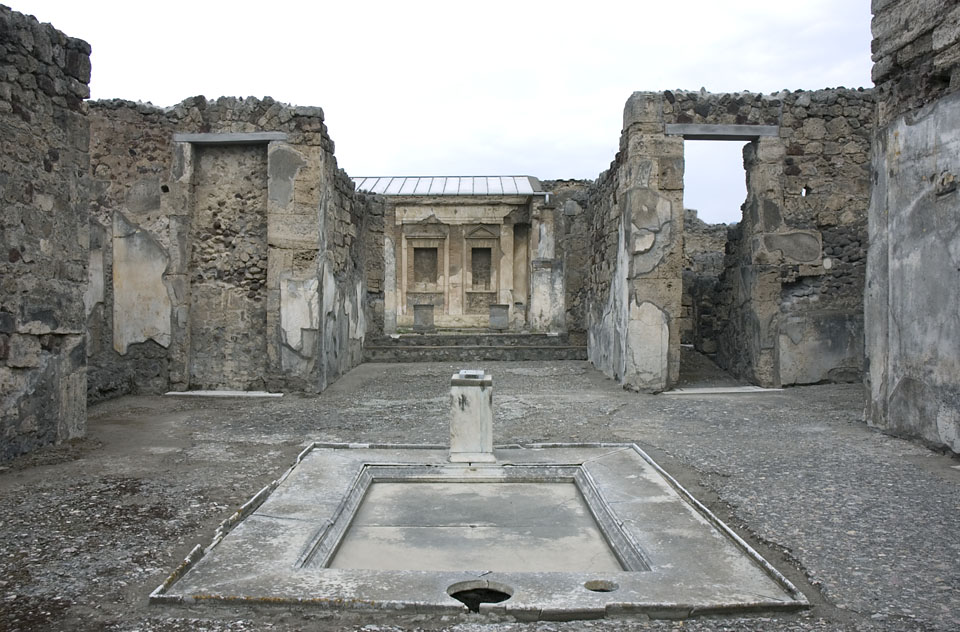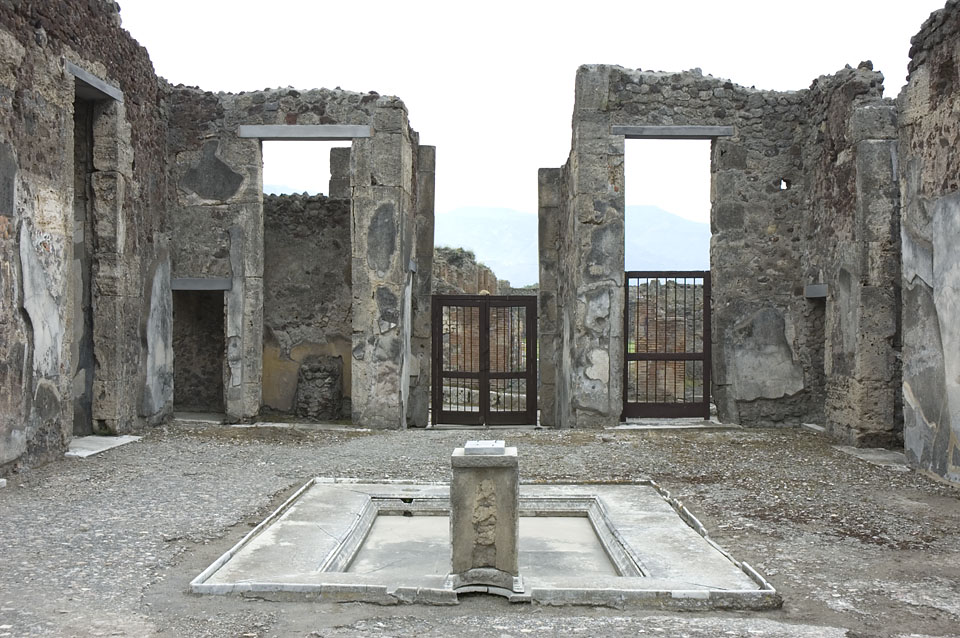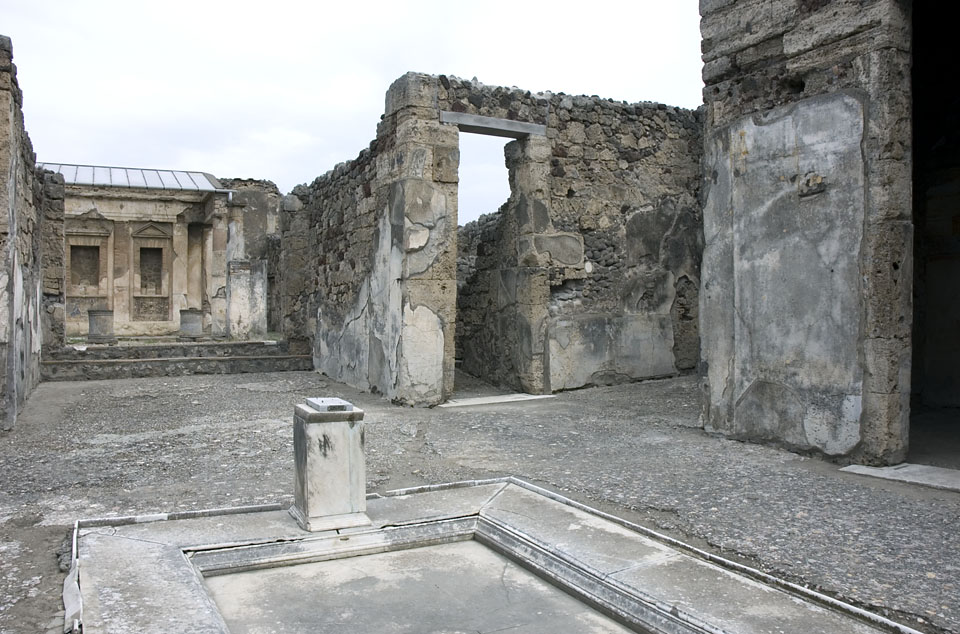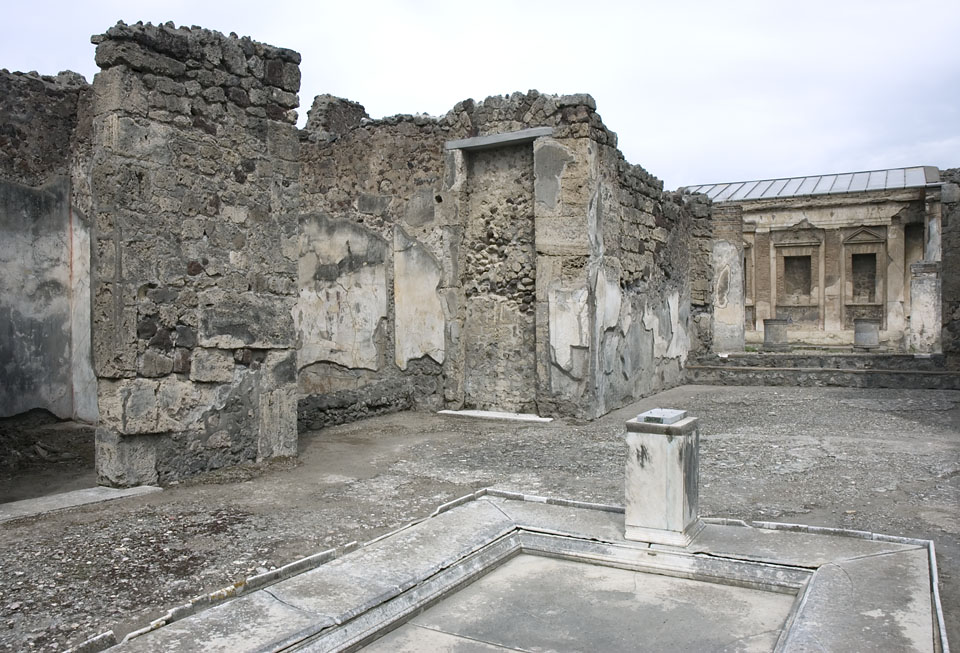Room 04 (atrium)
Description
Thomas Staub
The atrium4 is the centre of the southern part of the house and gives access to most of the surrounding rooms. As usual for the tuscan atria it also, by means of its compluvium served as light source not only for the room itself but also for some of the surrounding rooms. This function was especially important for the rooms to the west (rooms 14, 15, 16, 17), since, due to their localisation in the centre of the insula, it was not possible to open up windows in any other direction. With its impluvium as rain water collector and the cistern underneath it was also important for the water provision, at least until the house was connected to the aqueduct water system of the town.
The lay-out of the atrium is very much based on symmetry. The doorways towards the rooms surrounding the atrium are mirrored on the opposite side and in the cases were no real door existed (towards room 18 and taberna V 1,8) faked doors were inserted into the walls as a mean to preserve impression of symmetry. Only the low entrances to the two smaller rooms in the southern part (rooms 6, 17) do not have corresponding counterparts. All the other doorways towards the surrounding rooms are very high (4 m), amplifying the quite monumental impression of the atrium. The doorposts are made of large sarno limestone blocks, the walls in between of opus incertum, in the lower part mainly of lava, in the upper one mainly cruma set into a reddish mortar. In a fist phase all walls were reveted withbipedales, probably a protective measurement against humidity. Before the Second Style redecorations thesebipedales were removed. Only in the adjoining ala14 these panels remained on the walls. All thresholds in the doorways towards the adjoining rooms are made of travertine, whereas in the much larger openings towards the alae and the tablinum stripes white tesserae set in geometric patterns mark the boundary between the rooms. As it seems, the only change in the architectural layout of this room consisted in the blocking off of the doorway towards room 18 when this rooms instead became directed towards the peristyle.
When excavated in the 1830s the walls of the atrium were decorated with Second Style wall paintings. Of these decorations hardly any traces are preserved today, only a small frieze depicting dwarfs at everyday life actions was cut out and is preserved in a storeroom of the soprintendenza. The floor that belongs to the decoration phase is made of lime mortar with inserted small, mainly black stone chips, containing some coloured ones as well. The same pavement continues into the fauces (3), the alae (9, 14) and the tablinum (13.
The impluvium, made of large slabs of white marble, is situated in the centre of the atrium. It belongs to a later stage in the history of the house, probably from the first third of the first century A.D. and was equipped with three sets of fountains. One, placed on a pedestal on the rear, northern rim had the eponymous statuette of a bronze bull as fountain figure, the second one was a waterspout fountain in the centre of the impluvium and the third one consisted of four small jets emerging from the frame of the basin. The aqueduct water feeding these fountains came through a now lost lead pipe from the rear part of the house, through corridor 10 (were parts of the pipe are preserved under corners of the walls) and ended in a supposed water distribution box placed in a cavity behind the pedestal of the fountain statuette. Even if the impluvium was transformed into a place for decorative water games it did not lose its function as water collector. The inlet to the cistern underneath was situated at the southern side of the basin as also the cistern mouth. When the cistern was full an overflow channel beneath the floors of the atrium and the entrance rooms could lead the surplus water towards Via di Nola.
This part of the house was excavated between 1836 and 1838 (Pompeianarum Antiquitatum Historia vol. 2 (Fiorelli 1862, 329 - 353))
8.54 (N) - 8.70 (S) m x 13.03 (W) - 13.15 (E) m = 112.83 m2.

